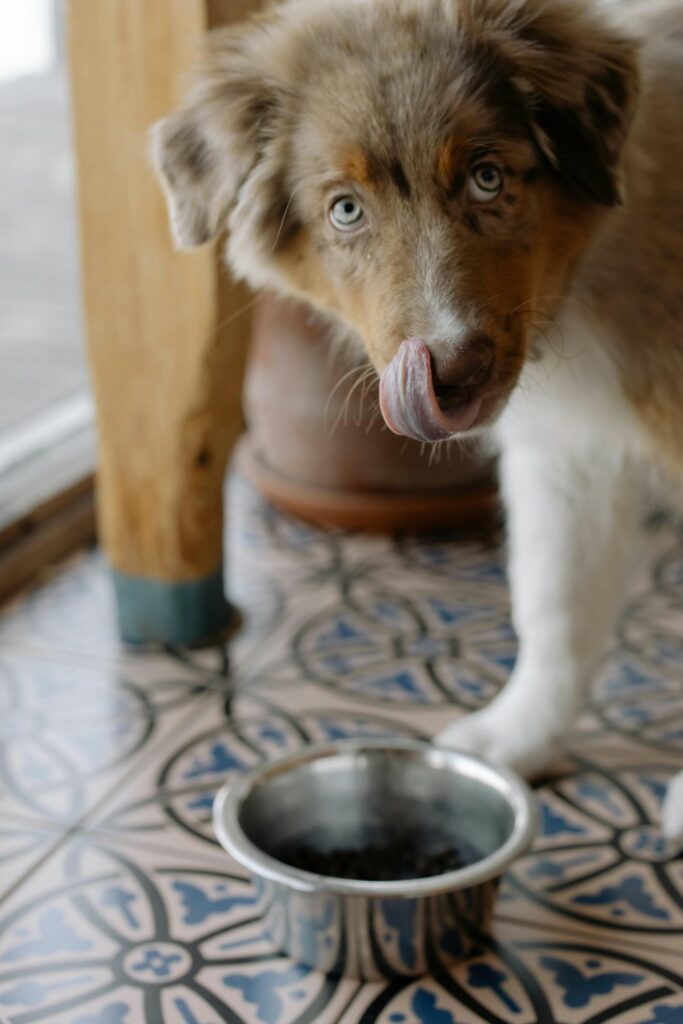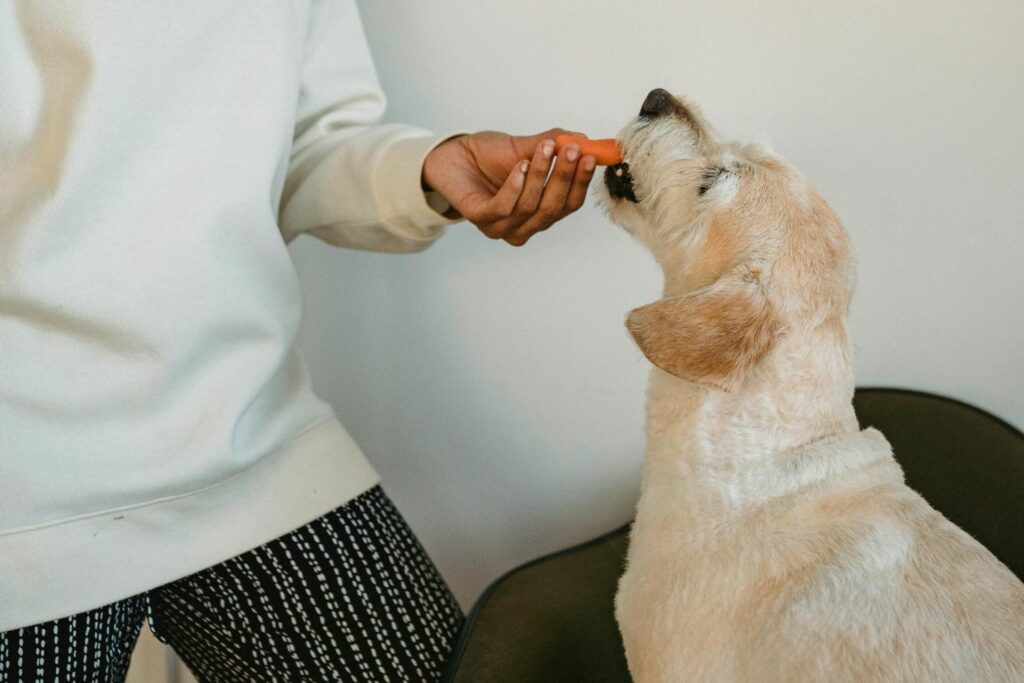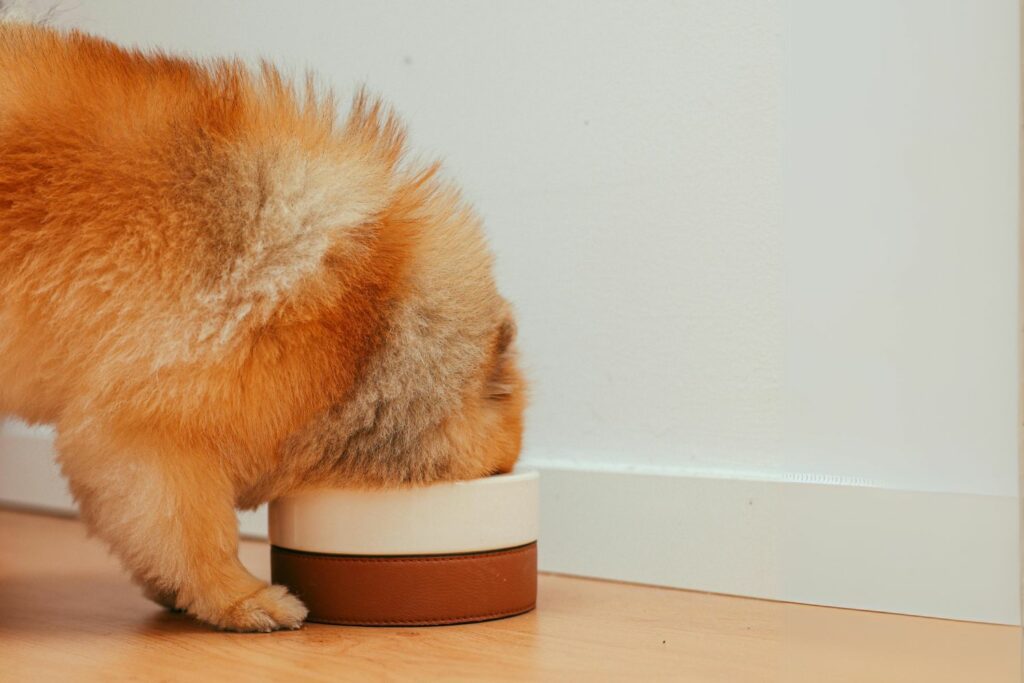Why Are Some Dogs Fussy Eaters?
 Synne Hemsen Berg
Synne Hemsen Berg
Does your dog sniff their food bowl, give it a dismissive glance, and walk away? If you’ve ever dealt with a fussy eater, you’re not alone. Many dog owners struggle to get their pets to enjoy regular meals. While picky eating can be frustrating, understanding the reasons behind it can help you address the issue effectively. In this blog, we’ll explore the causes of fussy eating in dogs and share practical tips to make mealtimes enjoyable again.
Why Are Some Dogs Fussy Eaters?
There’s not necessarily a single reason why a dog might be a picky eater. The most common causes include medical issues, behavioural problems, food-related factors, breed-specific tendencies and feeding habits. Let’s explore:

Medical Issues
The first thing to rule out when dealing with fussy eating is an underlying health condition. Potential medical causes include:
- Dental problems: Painful teeth or gums can make chewing difficult.
- Gastrointestinal issues: Dogs with sensitive stomachs may avoid food that has previously caused discomfort.
- Chronic illnesses: Conditions such as pancreatitis, kidney disease, or allergies can suppress appetite.
- Parasites: Worms and other parasites can interfere with digestion and appetite.
If your dog’s picky eating is accompanied by weight loss, vomiting, diarrhoea, or lethargy, consult your vet immediately.
Behavioural Causes
Dogs are intelligent and their eating habits can reflect their experiences or environment. It is therefore important to introduce good feeding habits from a young age. Common behavioural factors include:
- Overindulgence in treats or human food: Dogs quickly learn to hold out for tastier options if they’re regularly given treats or table scraps.
- Anxiety or stress: Major changes like moving house, home renovations, changes in your schedule, a new pet, or separation anxiety can disrupt eating habits.
- Attention-seeking: Some dogs refuse food because they’ve learned that being picky results in extra attention and treats.
Food-Related Factors
Sometimes, the issue is not the dog but the food itself. Factors that can contribute to fussiness include:
- Texture and size: Small dogs may struggle with large or hard kibble, while others might dislike certain textures, such as soft wet food.
- Food freshness: Dogs have an incredible sense of smell and can detect stale food or food stored improperly. Nala Health dog food comes in food-grade bags with a velcro seal to ensure freshness after opening.

- Storage hygiene: If you use a storage bin, ensure it is cleaned regularly. Residual oils from dog food can go rancid and contaminate fresh food, leading to an unpleasant smell or taste that dogs will reject. Better yet, store the food in the original packaging in the bin. Also always store dog food in a cool, dark place.
- Flavour preferences: Dogs may be sensitive to certain ingredients or flavours and develop preferences for specific proteins or recipes.
- Overfeeding: It’s easy to mistake a dog’s fullness for fussiness when they leave food in their bowl after a meal. In reality, the issue might simply be that they’re being served more than they need. If your dog appears to be a picky eater but maintains a healthy weight, consider reducing their portion size.
Breed Tendencies
Some breeds are naturally more selective when it comes to food. Smaller breeds, such as Chihuahuas, Yorkshire Terriers, and Dachshunds, are often more discerning. Working breeds, such as Border Collies and German Shepherds, may show picky behaviour if they’re under-exercised, as their energy needs and appetites are closely linked.
On the other hand, larger breeds like Labradors and Golden Retrievers are known for being less picky and more food-motivated. 1 in 4 Labradors has a genetic mutation that causes an increased appetite, which can lead to obesity if not managed. However, this doesn’t mean they’re immune to fussiness, especially if they’ve been indulged with treats or have underlying medical issues.

Feeding Habits
Feeding practices and habits can significantly influence a dog’s eating behaviour and expectations. Here are some key considerations:
- Irregular feeding schedules: Feeding at inconsistent times can confuse dogs and disrupt their appetite. Establishing set meal times is important. At Nala Health, we recommend feeding your adult dog twice a day and young puppies 3 times a day.
- Free-feeding: Leaving food out all day can make dogs less interested in eating. Scheduled meals encourage appetite and regulate digestion.
- Overfeeding treats: Excessive treats can fill your dog up and reduce their interest in meals.
- Feeding environment: A noisy or stressful setting can make a dog reluctant to eat. If you have small children, for example, it is important they let your dog eat in peace.
Good Feeding Habits to Implement
- Feed your dog in a quiet, distraction-free area.
- Serve meals at consistent times each day.
- Remove uneaten food to encourage regular eating habits.
- Use a clean, odour-free food bowl. Stainless steel or ceramic bowls are best as they don’t retain smells like plastic. Clean your dog’s food and water bowls daily.
How to Encourage a Fussy Dog to Eat

1. Choose High-Quality, Palatable Food
Dogs are much more likely to enjoy meals made with nutrient-dense ingredients that cater to their specific needs and preferences. High-quality food doesn’t just taste better—it’s also formulated to provide balanced nutrition, which supports overall health and well-being. When choosing a food for your fussy eater, here are some key considerations:
- Ingredient Quality: Look for food made with wholesome, real ingredients rather than artificial additives, fillers, or by-products. Dogs often reject food with a strong chemical smell or taste.
- Protein Source: Dogs tend to have strong preferences for certain proteins. Experiment with options like chicken, lamb, fish, or novel proteins such as black soldier fly larvae. Novel proteins can be especially beneficial for dogs with food sensitivities or allergies.
- Digestibility: Food that is easy to digest reduces the likelihood of discomfort, which can make your dog wary of eating. Opt for recipes with fibre and probiotics to support gut health.
- Taste: Dogs have a much stronger sense of smell than taste, which is why the scent of their food plays a crucial role in their appetite. Natural aromas from fat sources and other natural ingredients are therefore essential. To enhance the scent of the food, you can simply add a bit of lukewarm water. This releases the aromas, making the meal even more enticing for your dog.
Nala Health provides sustainable, nutrient-rich recipes made with black soldier fly protein, a highly digestible and hypoallergenic ingredient that’s perfect for sensitive dogs. Our food is crafted with natural colours and flavours to ensure a wholesome, delicious meal every time. Plus, with our convenient 400g trial bags, you can let your dog try our premium recipes before committing to a larger bag—making it easier to find the perfect fit for even the pickiest eaters.
2. Healthy Toppers for Fussy Eaters
Adding a topper to your dog’s food can make it more appealing. Here are some healthy options:

- Cooked pumpkin or sweet potato
- A small amount of plain, unsweetened yoghurt
- Dog-safe bone broth. We have a recipe here.
- Sardines in water or oil (no added salt)
- Steamed vegetables
Always introduce toppers in moderation to avoid upsetting your dog’s stomach and to limit the amount of extra calories they get.
3. Experiment with Temperature and Texture
- Warm up your dog’s food with lukewarm water to enhance its aroma.
- Mix dry food with a small amount of wet food to improve texture.
- Soften the kibble with water, cooled rooibos tea or broth to kibble. This is especially beneficial for dogs with sensitive teeth and gums.
4. Gradual Food Transitions
When switching to a new food, transition gradually over 7–10 days by mixing increasing amounts of the new food with the old one. This reduces the risk of digestive upset and increases acceptance.
When to Consult a Veterinarian
If your dog’s fussy eating is persistent or accompanied by other symptoms such as weight loss, vomiting, or lethargy, consult your vet. Medical conditions should always be ruled out before assuming the behaviour is simply due to preference.

Conclusion
Fussy eating in dogs can be frustrating, but with patience and the right approach, it’s possible to turn things around. By understanding the causes—whether they’re medical, behavioural, or food-related—you can implement effective solutions and ensure your dog enjoys mealtimes again.
If you’re looking for high-quality, allergy-friendly food to tempt your picky eater, try Nala Health. Our velcro-sealed bags ensure every bite is fresh, and our 400g trial bags let your dog sample our recipes before you commit to a larger bag. Explore our range today and give your dog the nutrition they deserve!

